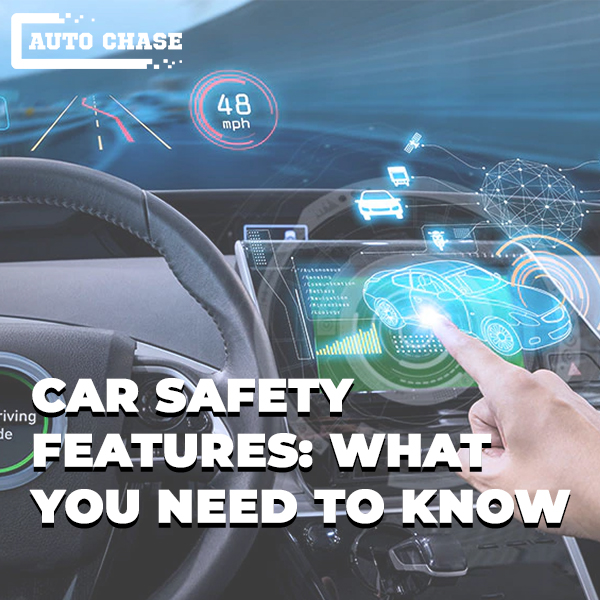When it comes to buying a car, safety should always be a top priority. Fortunately, there are a variety of car safety features available that can help protect you and your passengers in the event of an accident. Here are some of the most important car safety features you should know about:
Seat Belts: Seat belts are one of the most basic and important safety features in any car. They help keep passengers securely in their seats during an accident, which can help reduce the risk of injury or ejection from the vehicle.
Airbags: Airbags are designed to inflate quickly in the event of a collision, providing a cushion for the driver and passengers to help prevent serious injury. Most cars have front airbags, but many also have side airbags and curtain airbags to provide additional protection.
Anti-Lock Brakes (ABS): ABS is a braking system that prevents the wheels from locking up during sudden stops. This can help prevent skidding and loss of control, which can reduce the risk of accidents.
Electronic Stability Control (ESC): ESC is a system that helps drivers maintain control of their vehicles during sudden turns or evasive maneuvers. It does this by applying individual brakes and adjusting engine power to help keep the car on the desired course.
Blind Spot Detection: Blind spot detection is a system that uses sensors to detect other cars in the driver's blind spots. This can help prevent accidents caused by sudden lane changes or merging.
Rearview Cameras: Rearview cameras provide a view of the area behind the car, helping drivers to back up safely and avoid collisions with pedestrians, other cars, or obstacles.
Lane Departure Warning: Lane departure warning is a system that alerts drivers when they drift out of their lane without signaling. This can help prevent accidents caused by distracted or drowsy driving.
Automatic Emergency Braking: Automatic emergency braking is a system that uses sensors to detect an imminent collision and automatically applies the brakes to help avoid or reduce the impact of the collision.
Adaptive Cruise Control: Adaptive cruise control is a system that maintains a safe distance from the car in front, even in stop-and-go traffic. This can help prevent rear-end collisions caused by sudden stops or slowdowns.
Traction Control: Traction control is a system that helps prevent wheel spin during acceleration. This can help prevent skidding and loss of control, particularly on slippery roads.
When shopping for a new car, it's important to look for models that have a wide range of safety features. While some features may be more important than others depending on your specific needs and driving habits, having a comprehensive suite of safety features can provide peace of mind and help protect you and your passengers in the event of an accident.
It's also important to note that while car safety features can help reduce the risk of accidents and injuries, they are not a substitute for safe driving habits. It's still essential to wear your seatbelt, avoid distracted driving, and follow traffic laws and regulations to help prevent accidents and keep yourself and others safe on the road.
In conclusion, car safety features are essential for protecting yourself and your passengers while on the road. When shopping for a new car, be sure to look for models with a comprehensive suite of safety features, including seat belts, airbags, ABS, ESC, blind spot detection, rearview cameras, lane departure warning, automatic emergency braking, adaptive cruise control, and traction control. By doing so, you can help ensure that you're driving one of the safest cars on the road, and help keep yourself and others safe while on the road.

